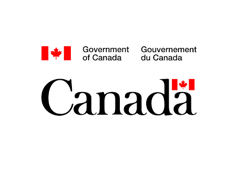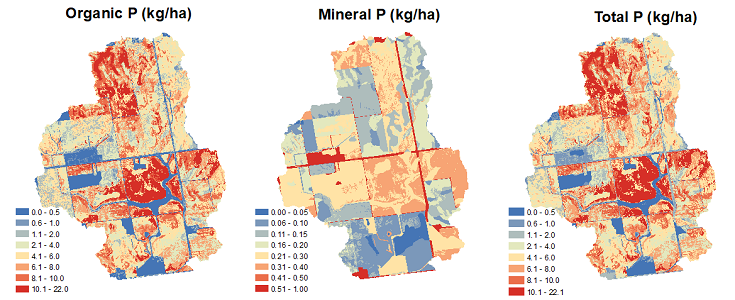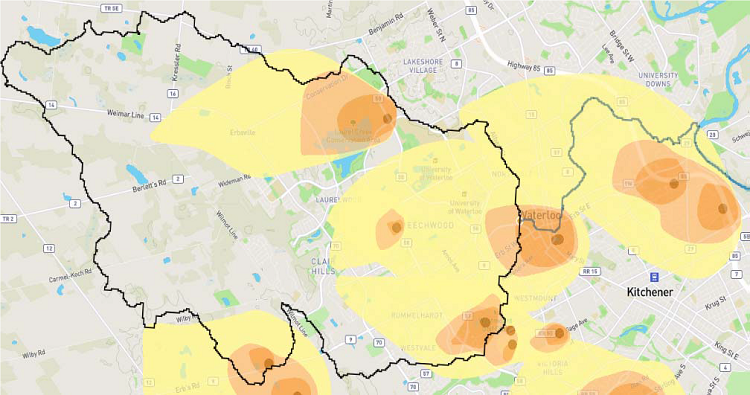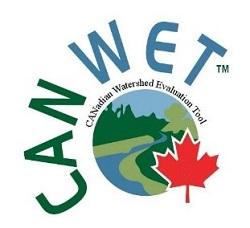CANWET™ is an open data, urban and rural, platform (and developed by GREENLAND® since 2003) for cumulative effects analysis and watershed management. CANWET™ is now “Powered by SWAT” and includes open source GIS-software designed to inform decision making around watershed management; integrated water supply and wastewater treatment infrastructure; urban drainage control; and, climate change adaptation. The platform’s ability to accurately calculate hourly water balance, nutrients, erosion sediment, bacteria, water temperatures, dissolved oxygen and other parameters from GIS data, enables CANWET™ to serve as a powerful decision support system. It also includes science-based climate change impact and mitigative Best Management Practices & Low Impact Development analytics, as well as “automated” modelling data calibration and verification capabilities.
The initial versions were completed with support from the Province of Ontario (Canada) to develop the award-winning “Lake Simcoe Protection Plan”. Further tool updates were then used for similar Assimilative Capacity; Watershed Planning; Master Drainage Planning; Water and Wastewater Infrastructure Planning; and, Source Water Protection projects in Canada.
From 201 5 - Present, GREENLAND® and the University of Guelph (Canada) were retained by the Government of Canada to undertake an “Evaluation of Policy Options to Achieve Phosphorus and Nutrient Reductions from Canadian Sources to Lake Erie”. The initial project established an extensive list of the most viable policy options. Subsequent evaluations then examined the effectiveness of all policy options on the basis of achieving nutrient load reduction targets; sustainable cost effectiveness; potential impact to the economy; social acceptance; and, efficiency of implementation. Later projects then considered what initiatives were in place and recommended how gaps might be filled. The main objective was to determine what “best suite of policy actions” could achieve the greatest nutrient load reductions, while also being the most effective in terms of cost, time and social acceptance. A unique analytical and stakeholder engagement approach was undertaken using CANWET™ (v.4) and as a means of quantifying and better understanding the origin / timing of phosphorus loads from the Canadian watershed lands draining to Lake Erie.
5 - Present, GREENLAND® and the University of Guelph (Canada) were retained by the Government of Canada to undertake an “Evaluation of Policy Options to Achieve Phosphorus and Nutrient Reductions from Canadian Sources to Lake Erie”. The initial project established an extensive list of the most viable policy options. Subsequent evaluations then examined the effectiveness of all policy options on the basis of achieving nutrient load reduction targets; sustainable cost effectiveness; potential impact to the economy; social acceptance; and, efficiency of implementation. Later projects then considered what initiatives were in place and recommended how gaps might be filled. The main objective was to determine what “best suite of policy actions” could achieve the greatest nutrient load reductions, while also being the most effective in terms of cost, time and social acceptance. A unique analytical and stakeholder engagement approach was undertaken using CANWET™ (v.4) and as a means of quantifying and better understanding the origin / timing of phosphorus loads from the Canadian watershed lands draining to Lake Erie.
In 2018, GREENLAND® initiated a 4-year software collaboration with the University of Guelph (Canada). The first project included further developing CANWET™ with Artificial Intelligence (machine learning) features, as well as maintaining current capabilities and adding new / proven-science predictive modelling functions available for the “SWAT” analytical engine. “The system will make this information accessible to everyone from government to urban planners and researchers,” says Professor Prasad Daggupati from the University of Guelph. “Users will be able to see spatially what is happening and take appropriate actions.” The project will enable regulatory agencies to reduce the harmful effects that algal blooms have on water quality, fish, and wildlife populations in and surrounding the Great Lakes Basin.

CANWET™ Spatial (HRU Scale) Distribution of Annual Average Phosphorus Forms (Organic, Mineral, Total at the “Site Level”) in a Subwatershed of the Grand River Watershed (Lake Erie Basin – Canada)
The latest “Big Data Version” of CANWET™ (developed by GREENLAND® and University of Guelph) has advanced earlier (desktop) versions by utilizing high performance parallel (cloud) computing functionality. The latest update is a fully functional web-based platform with SWAT modelling tools that can allow greater access by decision makers and stakeholders. Therefore, the new version advances the idea of evaluating cumulative effects in the watershed decision making process rather than the current practice of assessing proposed changes in isolation.
The CANWETTM evolution (since 2018) has taken advantage of high performance computing by porting existing code to a higher performing language and restructuring to operate using parallel or multi-core processing. Therefore, the platform operates now with “dramatic reductions” in simulation runtimes. The reduced runtimes also facilitated the use of new automatic calibration and verification routines for SWAT model setups – thereby, reducing project labour costs. It can also enable faster analytics for “What-If” watershed simulations and if a re-run is requested through the web-based user interface. In 2021 (and beyond), it is anticipated the CANWET™ (machine learning) web-based platform (“Powered by SWAT) will be used more by decision and policy makers in Canada and to understand better the sources of pollution (and related climate change factors). For example, this includes phosphorus which is a major contributor to Lake Erie eutrophication problems. Therefore, CANWET™ can be used to also develop sustainable policies in supporting a wide variety of watershed planning Best Management Practices and ultimately help achieve the Canadian Government’s commitments to reduce 40% phosphorus entering Lake Erie by 2025.
In January 2020, another CANWET™ public – private partnership involving the City of Waterloo (Canada) was initiated by the GREENLAND® and University of Guelph team. This collaboration will develop an integrated model of surface/groundwater interactions using CANWET™ and with available “MODFLOW” databases. The platform will be used by the project team to investigate sodium chloride (salt) transport affecting the Laurel Creek Watershed. The integrated surface / groundwater platform will also take advantage of in-house high performance computing resources to calibrate and validate the CANWET™ model. This second-to-none platform will enable the Municipality to:


______________________________________________________________________________
Town of Penetanguishene
As Director of Public Works for the Town of Penetanguishene, I would like to extend my appreciation to Greeland Consulting Engineers for providing exemplary contract administration and construction inspection services for the Penetang Main Street Reconstruction Project.
The Main Street reconstruction was a huge undertaking for the Town which consisted of: the full reconstruction of 1.4 km of roadway including widening for improved land widths, on-street parking, storm sewer replacement, watermain and sanitary sewer replacement, as well as landscaping and lighting improvements to better serve businesses and residents. The project included significant logistical challenges with respect to the coordination of public access for businesses, and providing workable upgrades to exisiting infrastructure under difficult site constraints and a tight time line.
As the Contract Administrator and on-site Construction inspector, Greenland always maintained open lines of communication between the Town, Contractor, affected businesses and residents, and promptly, responded to all questions and issues raised by the Contractor, the Town and the public. Greeland's attention to detail throughout the assignment helped ensure the project was completed on-time and under budget.
Bryan Murray, P. Eng
Director of Public Works
Town of Penetanguishene
February 12, 2019
NRC-IRAP
I am writing to acknowledge the completion of a successful R&D project funded by the National Research Council’s Industrial Research Assistance Program (NRC-IRAP).
Your firm’s performance on the project was excellent, and your team was a pleasure to work with.
The CANWET product that you have commercialized since the end of the project represents a strong step forward in your field, and you should be proud.
We wish you well in the successful commercialization of the technology, and the continued growth of your firm which will contribute to the Canadian economy.
Doug Reed
Industrial Technology Advisor
NRC-IRAP
July 8, 2011
Credit Valley Conservation
I wanted to take this opportunity to thank you for your work on the Brampton “Pond 10 Floating Islands Research Project”. This project was a “first of its kind” within our watershed.
Greenland was responsible for preparing the design brief for the islands that provided details on the anchoring system design, safety considerations and a strategy for establishing a vegetation community among other things. This was a challenging project given that there was no pre-established process to follow and therefore we were defining the design and implementation process from scratch.
Greenland was always very responsive when issues arose and helped us troubleshoot options to solve the issue. They refined the design brief and assisted CVC with implementing improved anchor designs that have been successful in keeping the islands stable over the past few years even though some extreme weather events.
We were very pleased with the consulting services Greenland provided for this project.
Phil James, P.Eng.
Manager, Watershed Protection and Restoration
Credit Valley Conservation
March 14, 2014